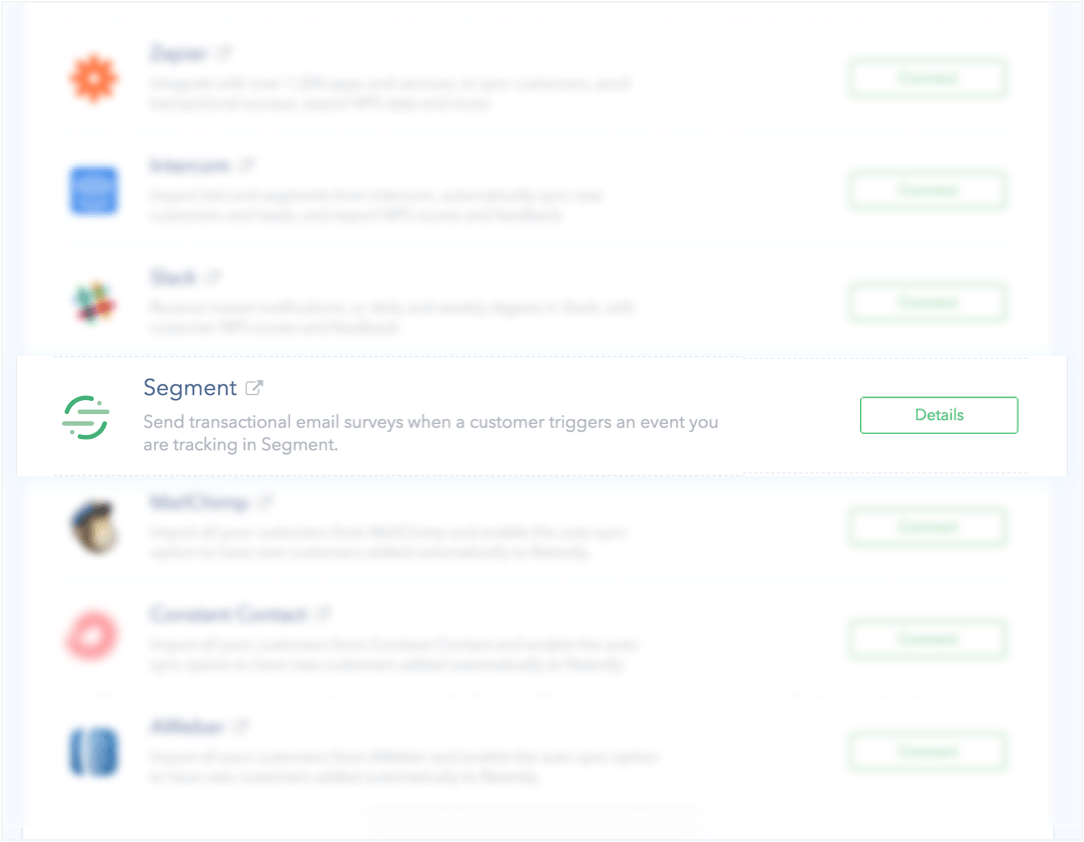Connect Retently
with other apps
using Segment
Send surveys triggered by Segment events, collect and analyze customer feedback in Retently.
Start Free Trial
Track and improve customer satisfaction
Use Retently to get a constant pulse on your customer satisfaction and gain an accurate understanding of how your company, product, or service is perceived.
Uncover areas that require improvements or strengths that put you ahead of your competition.
Send customer surveys triggered by Segment events
Connect Segment and send transactional email surveys when your customers trigger specific events.
Sample your audience, delay, or throttle campaigns to avoid over-surveying customers.
Send automated, personalized surveys
Send customized and highly personalized email surveys to your customers.
Automatically follow-up or send reminder surveys to the ones who did not provide feedback.
Close the feedback loop
Send survey reminders and automatically trigger personalized autoresponders based on the received survey score and feedback.
Follow up with unsatisfied customers to learn more about the challenges they’re facing, or invite Promoters to your referral program.

Integrate code-free, no developers required
Integrate Segment and Retently quickly and hassle-free!
The integration setup is code-free and doesn’t require developers. Just add a Retently API token in Segment and select the events that will trigger the survey.
Connect your
Segment account
Get Started

















